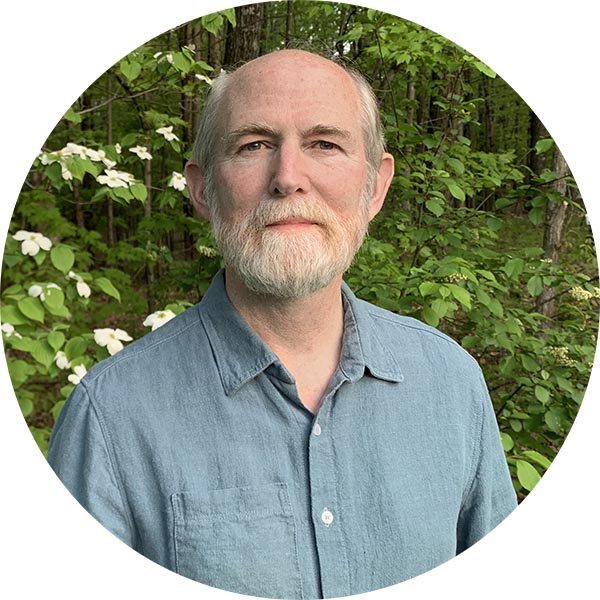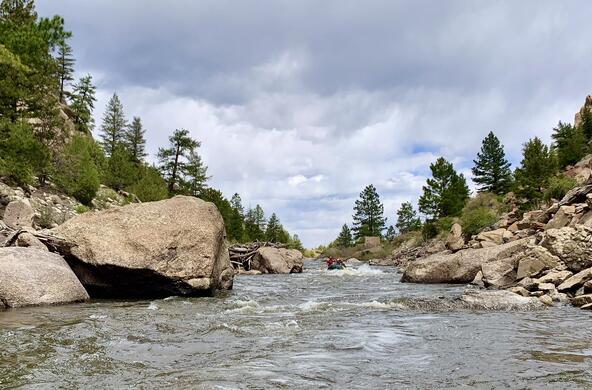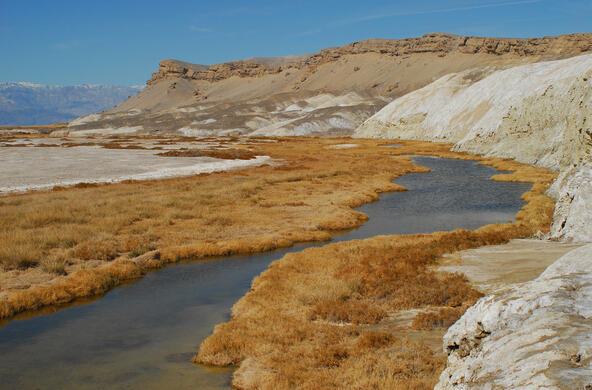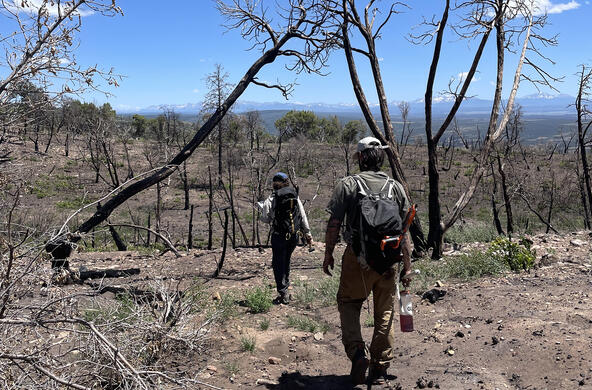Standing timber in the northeastern United States has waxed and waned according to society's evolving needs.
Early settlers saw trees as an impediment to agriculture, and set to work clearing forests. They were wildly successful at this backbreaking task. In southern New England and southeastern New York, by the mid-1800s as much as 80 percent of forest land was cleared for agriculture.
After several decades of farming, many fields were abandoned because of declining soil fertility. In the early 1900s, the young forests covering these fallow lands were often more valuable than traditional crops. After white pines were harvested for lumber, maples and oaks typically became dominant.
As the U.S. timber industry spread westward, pressure on northeastern forests declined, and wildlands returned.
Today, forests and woodlots cover roughly two thirds of the land from Maine to Pennsylvania. But once again, the tide may be turning. In the search for renewable energy, scientists and engineers are looking to Northeastern forests, not for lumber or paper pulp, but as a source of woody biomass to be burned for heat or electricity or converted into a liquid fuel for vehicles.
Forest-based energy has the potential to be "carbon-neutral." The carbon dioxide released into the atmosphere when forest biomass is burned is taken back out of the atmosphere when new trees grow. But can forest-based energy reduce global warming? The jury is out. Many scientists have concluded that simply allowing our forests to grow, so they can take carbon out of the atmosphere and store it as wood, would have greater net benefits to the atmosphere.
Yet a number of northeastern states, including New York, have already developed renewable energy mandates or goals that assume forest biomass will play a significant role in our energy future. There is growing concern among scientists that expectations for biomass energy are based on unrealistic assumptions about the nature of the northeastern forest resource.
With colleagues at the Cary Institute of Ecosystem Studies and other institutions, I have been working to determine the potential for northeastern forests to supply sustainable biomass energy. Our conclusions, which highlight the states that show the most potential for growth in the biomass industry, will be released in a press conference this week.
Our analyses dispel a number of common assumptions about northeastern forests. The first is the perception that timber harvests are far below historic levels. This impression may stem from the steady decline in the numbers of sawmills and pulp mills in our region, creating the appearance of a decline in demand for forest products. But the steady stream of log trucks headed north to Canada tells a different story.
A shift in logging methods, from clear cutting to selective logging, may also contribute to impressions that logging levels are low. In New York and New England, logging operations typically remove a small percentage of trees at any one time — 15 percent and 30 percent, respectively. The move away from clear cutting can be traced, at least in part, to concerns about environmental effects. But many foresters feel selective logging, with its focus on removing the "best" trees, has the ability to compromise the productivity of future forests.
Another common assumption that our research has debunked is that most northeastern forests are "mature" — and their potential to grow and store more carbon has declined. In part because of pervasive selective logging, the trees in our forests are a variety of ages. Their composition is well-suited to adding biomass and sequestering atmospheric carbon.
Northeastern forests have been characterized as a vast, untapped resource. But our calculations of how much forest biomass can be sustainably harvested, given current logging, paints a different picture.
Taken as a whole, northeastern forests are adding about 50 percent more biomass each year than is currently removed by logging. But this figure includes all forest land, including areas where logging is legally prohibited. It also includes sites where logging either shouldn't occur — in wetlands, on very steep slopes, at high elevations, along rivers and lakes — or won't occur because the owners choose not to log to protect one of the many other values we find in forests.
Determining how much forest land is actually available for logging is the greatest source of uncertainty in calculating the amount of forest biomass that can be sustainably harvested.
Logging is legally prohibited on only 6 percent of northeastern forests and two-thirds of those protected lands are found in New York state, largely on the Forest Preserve of the Catskills and Adirondacks. But when you add up all the other potential ecological, economic and social constraints, we estimate 20-30 percent of the forest land is not available for harvest.
If that is the case, then we are already close to the limit of sustainable harvests from northeastern forests, and the biomass energy potential from northeastern forests will be smaller than both policy makers and the forest products industry hope.
To learn more, visit the Cary Institute's website on Jan. 20 for the unveiling of our report, "Forest Biomass and Bioenergy: Opportunities and Constraints in the Northeastern United States." The report will provide insight into the states that show the most promise for offsetting fossil fuel-based heating with energy generated from forest biomass.








